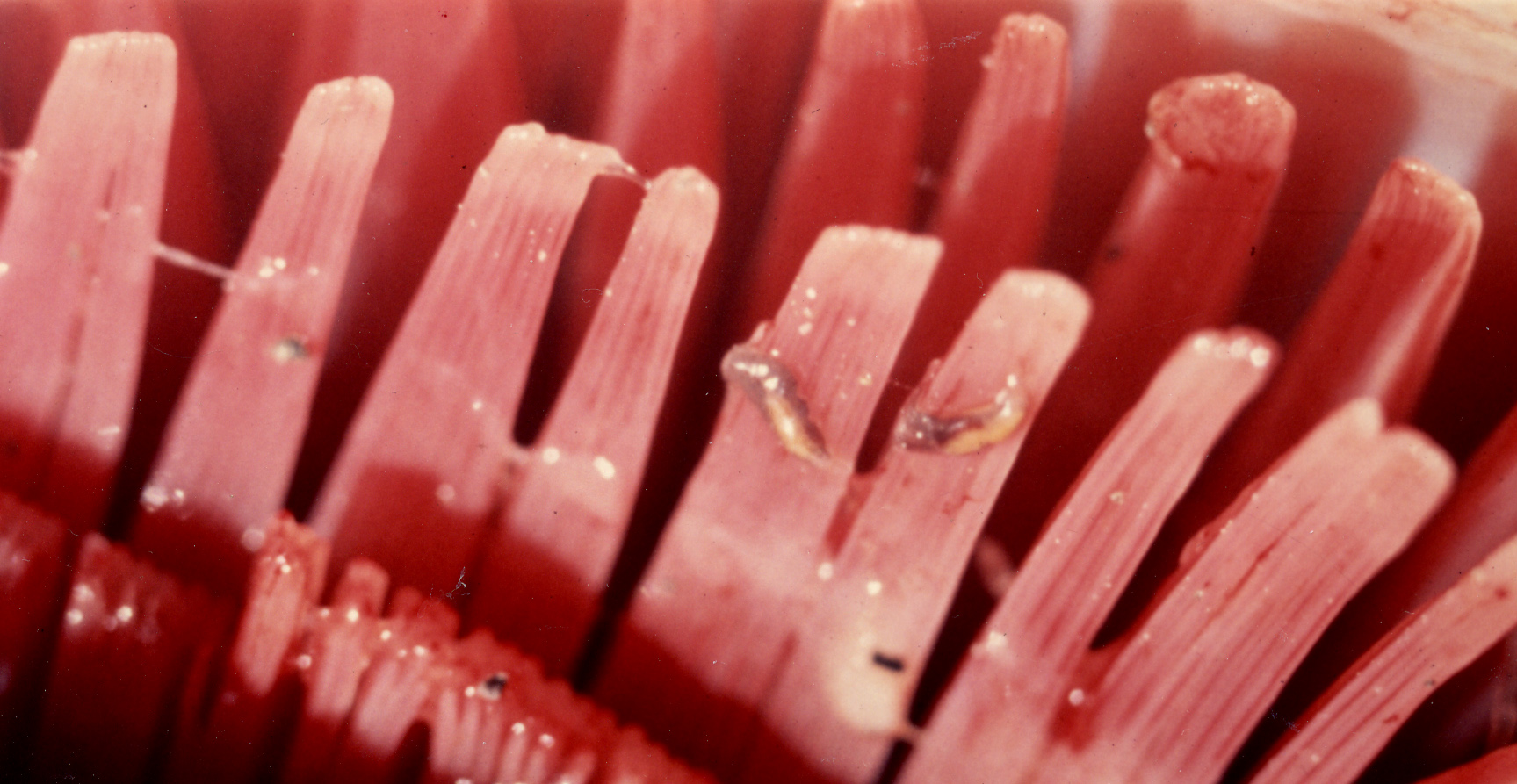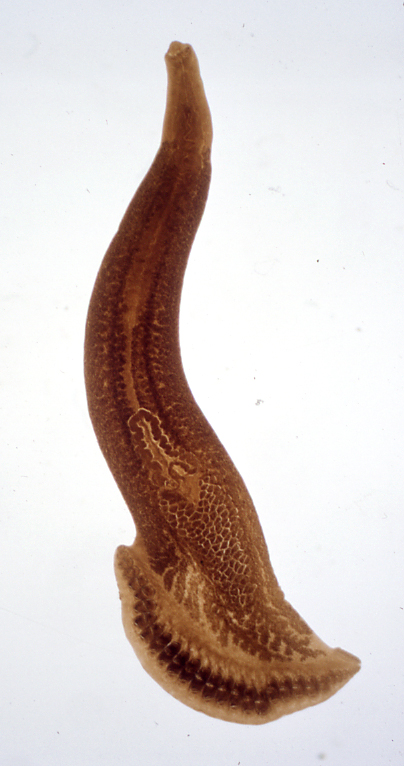
| Parasite | Heteraxine heterocerca |
|---|---|
| Taxonomy | Plathyhelminthes, Monogenea, Polypisthocotylea |
| Hosts | Yellowtail (Seriola quinqueradiata), Greater amberjack (Seriola dumerili) |
| Infection site | Gill |
| Clinical signs | Infected fish exhibits no external abnormality. Parasite (max. ca. 17 mm) attaches the gill filaments. The gills become pale and anaemic by blood-feeding of the parasite in heavy infection. |
| Parasitology | The parasite body is 5-17 mm long, asymmetrical and approximately triangular in shape, and gradually tapers anteriorly. The parasite grasps the gill lamellae by a haptor with 2 rows of clamps at the posterior end. It bears 24-32 clamps on one side, 3-14 smaller clamps on the other. The hermaphroditic adult produces oval eggs (300-800 eggs at one time) with a long filament. This filament leads the eggs entangled with the net-cage (Matsusato, 1967). The eggs hatch on 14.4 days at 12.5 C.; 9.7 days at 18.5 C.; 7.5 days at 23.9 C., and never hatch at 29.7 or 6.5 C. (Matsusato, 1967). |
| Pathology | The gills become pale and anaemic by blood-feeding in the heavy infection. Chronically infected fish are sometimes emaciated following to the low feeding. |
| Health hazard | Since this parasite is not infectious to human, it is harmless in food hygiene. |
| Diagnosis | The parasite can be morphologically identified in a flattened preparation. Yellowtail is susceptible only to Heteraxine heterocerca, while greater amberjack fry is infected with H. heterocerca and Zeuxapta japonica. These two species are distinguished by morphological observations for the rows of clamps, e. g. the rows of clumps in Z. japonica are more symmetrical (one is 45-47 clamps, the other is 39-42) than those of H. heterocerca. |
| Other information | This disease has occurred in a marine net-pen culture since 1960s, when yellowtail culture started, because the eggs with a long filament readily become entangled in a net cage. A hypersaline water-bath is known as an effective method to kill Heteraxine heterocerca, but it is not practical because of its damages to fish. It is recommended to regularly change the net for the purpose of removing the entangled eggs. |
| References | Matsusato, T. (1967): Axine (Heteraxine) heterocerca,
an ectoparasitic trematode on cultured yellowtail. Fish Pathol., 2,
105-111. (In Japanese)
|


(Photos by S. Egusa (1) and K. Ogawa (2))
Fig. 2. A stained specimen of H. heterocerca
Fig. 1. H. heterocerca on the gill filament of yellowtail